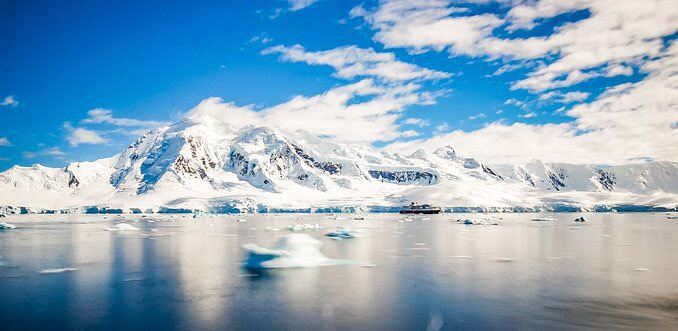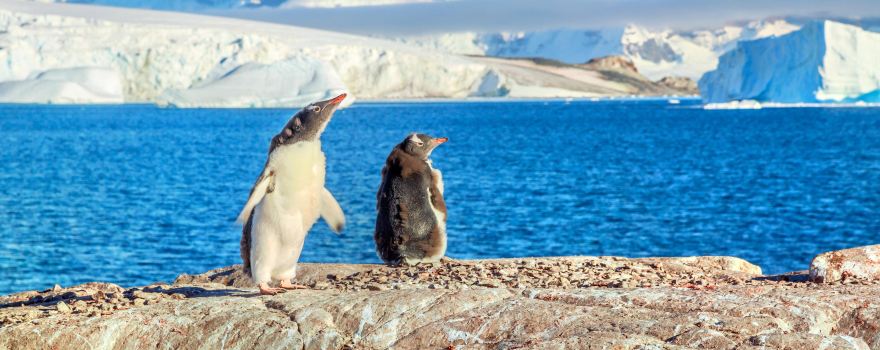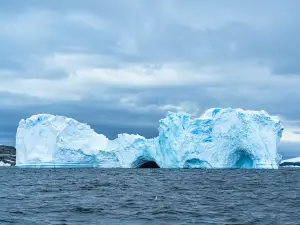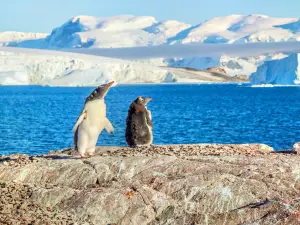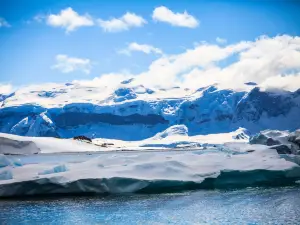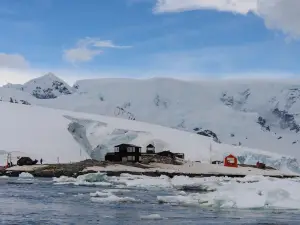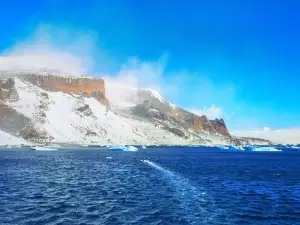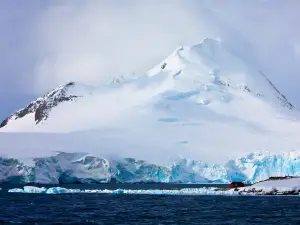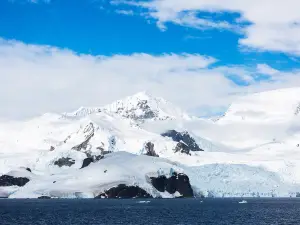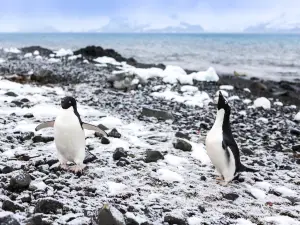Antarctica Independent Travel Guide (2025): Top Things to Do, Popular Attractions, Itinerary Planning, Accommodation, Food, Transportation, Weather, and More - Everything You Need to Know (Updated May, 2025) | Trip.com
About Antarctica
Antarctica Local Experiences Map
Antarctica Local Travel Guide 2025
Brief Guide
Antarctica is Earth’s southernmost continent, home to the South Pole. It’s the coldest, driest, and windiest continent, with vast ice sheets covering about 98% of its area. Antarctica has no permanent human population, but various countries maintain research stations there. It’s known for its extreme climate, stunning icy landscapes, unique wildlife (such as penguins, seals, and whales), and pristine environment. Antarctica is the Earth's southernmost continent, a vast, icy landmass that covers about 14 million square kilometers. It is home to glaciers, ice shelves, and research stations. The South Pole, on the other hand, is a specific geographic point located within Antarctica at the southern end of the Earth's axis, where all lines of longitude meet. It's the southernmost point on the planet.
Best Time to Visit
The best time to visit Antarctica is during the Antarctic summer, which runs from November to March. During these months, temperatures are more moderate, and there is nearly 24 hours of daylight, making it ideal for exploration. November: November is the very start of the Antarctic tourist season. Summer is just beginning and the abundant wildlife becomes more active. The days are still cold though and temperatures are generally below freezing. Large ice floes and glaciers still remain in November creating some incredible natural ice sculptures. December to January: The peak of Antarctica's summer season, with the longest daylight hours (even experiencing the midnight sun), mild weather, and the most active period for wildlife such as penguins and seals. Penguin chicks begin to hatch, and whales are more easily spotted, making it the best time for wildlife observation.February to March: The end of Antarctica's summer, with ice and snow gradually melting, less sea ice, and opportunities for deeper exploration into the Antarctic mainland and glaciers. It is the peak season for whale watching and also the most active time for seals. Overall, December to January is the best time for observing animals and enjoying the natural scenery, while February to March is suitable for in-depth exploration of Antarctic.
Must-try Local Experiences
1. Iceberg and Glacier Exploration The landscape is dominated by massive icebergs and glaciers. Taking an icebreaker through Antarctic glaciers, you can admire huge icebergs and glacier fissures, and even have the opportunity to witness spectacular scenes of glacier collapse. 2. Wildlife Watching Antarctica is home to an array of incredible wildlife, including penguins (like the Emperor and Adelie species), seals (Weddell, Leopard), and whales (Humpback, Orca, and Minke). Watching penguins waddle and swim, and seals basking on ice floes, is a must! 3. Hiking and Snowshoeing Depending on the season, you can hike or snowshoe on the Antarctic Peninsula, offering stunning views of the icy wilderness. 4. Take a Zodiac Cruising Zodiac cruises offer an excellent opportunity to see marine mammals such as seals, penguins, and whales up close. Passengers can observe these animals in their natural habitat without disturbing them. 5. Whale Watching There is a chance to see whales surfacing between glaciers up close. Watching whales in the waters of Antarctica is a very special experience. Humpback whales, blue whales, and killer whales often appear in the waters around Antarctica, especially in summer, where they gather to forage and breed. 6. Penguin-nurturing Observation Antarctica is one of the largest penguin habitats in the world, where multiple penguin species such as emperor penguins, Adelie penguins, and Papua penguins breed. The end of winter to spring is the best time to observe penguins incubating eggs and nurturing their young. 7. Visit Research Stations Some tours allow you to visit scientific research stations to learn about the critical environmental studies being conducted in Antarctica. 8. Experience the Polar Day and Night in Antarctica In Antarctica, summer polar days allow you to enjoy sunlight 24 hours a day, while winter polar nights bring endless darkness and mystery. In the summer of Antarctica, experience the extraordinary charm of polar day by riding a small exploration boat through huge icebergs under the midnight sun. 9. Take a Polar Plunge For the adventurous, take a quick dip into the icy waters of Antarctica, a thrilling and memorable experience. Tourists can wear cold-proof equipment and jump into designated areas of seawater for an ice swimming experience. 10. Camp on the Ice Spend a night camping on the Antarctic ice, immersing yourself in the pristine environment and enjoying the polar night. Sleeping under the midnight-sun is certainly a unique opportunity and you’ll be able to hear all the sounds of the continent as you lie in bed, including the crackling of splitting icebergs and the grumblings of the moving glaciers. All camping gear is usually provided, however, it’s always wise to bring an extra sleeping bag or sleeping mat just in case. 11. Try Antarctica’s Post Office and Museum at Port Lockroy Port Lockroy is home to Antarctica’s only post office and museum and it's often a favorite stop for travellers. You can try to send a postcard here. A postcard can reach its destination in as little as two weeks, but it often takes considerably longer. Please note that this place is only open for business during the summer period in Antarctica. 12. Capture the Beauty of Antarctica Antarctica offers breathtaking photo opportunities, from towering icebergs and playful penguins to stunning sunsets and the Southern Lights. Take a helicopter ride: Take a helicopter ride to have the panoramic view of glaciers, icebergs, and vast ice fields of Antarctica from the sky, and witness the magnificent scenery of this white continent. This is the best way to appreciate the panoramic view of the Antarctic. 13. Take a Helicopter Ride Take a helicopter ride to have the panoramic view of glaciers, icebergs, and vast ice fields of Antarctica from the sky, and witness the magnificent scenery of this white continent. This is the best way to appreciate the panoramic view of the Antarctic.
Travel Tips
1. Plan and Reserve Early Many popular attractions in Antarctica, such as guided tours to penguin colonies and visits to research stations, require advance reservations. These spots have limited capacity to protect the environment and ensure safety. The Antarctic tourism season runs from November to March. Book your trip well in advance, especially for the popular December-January period, to secure your spot. 2. Respect Wildlife and Environmental Regulations Antarctica's wildlife is protected by strict regulations. Maintain a safe distance from animals and avoid disturbing their natural behavior. Violating these rules can result in hefty fines. Additionally, travelers are required to follow strict guidelines to minimize their environmental impact, including proper waste disposal and avoiding the introduction of non-native species. 3. Comply with the Polar Environmental Protection Treaty Antarctica is the last pure land on Earth, and tourists must strictly abide by environmental regulations. All garbage should be brought back to the ship for disposal to maintain the pure environment of Antarctica. The Protocol on the Protection of the Antarctic Environment (also known as the Antarctic Treaty) stipulates that all tourists must maintain a distance from natural scenery such as glaciers and must not take away any natural objects, including stones, bones, etc. 4. Beware of Ice Cracks and Personal Safety Ice cracks can be hidden under snow and pose serious risks. Always follow your guide's instructions and stay on marked paths to avoid accidents. 5. Hypothermia and Frostbite & Snow Blindness Awareness The extreme cold in Antarctica can lead to hypothermia and frostbite very quickly. Dress in layers, stay dry, and be aware of the early signs of these conditions. Remember to wear good eye protection whether the day's cloudy and overcast or bright and sunny; either way, the snow and ice reflect sunlight to a dangerous degree for eyes. 6. Food and Water Safety When traveling in Antarctica, it is necessary to ensure the freshness and antifreeze of food, and it is recommended to carry enough energy-rich snacks or food to keep you fueled throughout the day. The catering on board is strictly screened to avoid bringing fresh food on your own to prevent the introduction of alien species. 7. Pay Attention to Personal Health and Prevent Sudden Health Problems The conditions in Antarctica are extreme and medical resources are limited. It is recommended to carry commonly used and emergency medicines with you and ensure stable physical health, suitable for polar travel. If you have potential health issues such as heart disease or respiratory disease, it is recommended to undergo a health assessment before departure. 8. Drone Usage Regulations The use of drones in Antarctica requires special permission in advance, and it is important to avoid interfering with wildlife and scientific activities, especially in sensitive areas such as seabird rookeries. When filming, make sure that the drone's batteries are cold-resistant and meet the safety standards set by the Antarctic. 9. No Photography of Research Stations Photography of certain research stations and equipment is prohibited to protect sensitive scientific work. Always ask for permission before taking photos in these areas. 10. Tipping is Usually Required for On-board Purchases Tipping practices on Antarctic cruises are similar to those on international cruises, with gratuities usually provided for crew and service personnel in an amount suggested by the cruise line, but usually around $10-15 per person per day, not included in the pre-paid all-inclusive rate. Tipping is generally not required for tourist services after landing in Antarctica, and can be used to support the local economy by purchasing souvenirs, etc. 11. Comply with Ship Safety Regulations There are strict safety regulations in the Antarctic waters, and all safety regulations must be followed on board, including emergency drills, wearing life jackets, etc. Any violation of safety regulations may result in you being prohibited from participating in specific activities. 12. Pay Attention to Water Conservation The Antarctic research station has limited resources, and water conservation is also encouraged on board, such as short showers and repeated use of towels. 13. Tips for Antarctic Camping Experience People usually choose to camp after dinner, and please note that there is no toilet on the shore. If you need to go to the toilet in the middle of the night, you must wake up the crew and let them use the small boat to take you back to the big ship and use the toilets.
Must-see Attractions
The Antarctic Peninsula is a prominent and captivating region located at the northernmost part of the Antarctic continent. Stretching towards the southern tip of South America, it is often considered the gateway to Antarctica. The peninsula is characterized by its stunning landscapes, abundant wildlife, and rich history of exploration. Paradise Bay: Known for its magnificent iceberg landscapes and snow-capped mountains reflected in the water, Paradise Bay is a great place to see the beauty of the Antarctic. Lemaire Channel: Often referred to as the "Kodak Gap" due to its photogenic beauty, this narrow channel offers some of the most breathtaking views in Antarctica. Historic Research Stations: There are several research stations operated by different countries, such as the UK’s Rothera Research Station and Argentina’s Esperanza Station, offering insights into scientific research and the history of Antarctic exploration. Brown Bluff: Brown Bluff is a prominent geological feature located on the Antarctic Peninsula. The bluff rises steeply from the sea, reaching heights of approximately 745 meters (2,445 feet). Neko Harbor: Neko Harbour is an inlet deep in Andvord Bay off the coast of Graham Land in the Antarctic Peninsula. Neko Harbour is also one of the few places where you can reach the Antarctic continent.
Entry & Exit Policy
Antarctic cruises are the most popular way to explore the continent, offering a range of routes that typically depart from South America, New Zealand, or Australia. South America Ports The countries closest to Antarctica are Argentina and Chile. Most Antarctica cruises depart from South America, specifically from the port city of Ushuaia in Argentina, but some start in other port towns in Argentina and Chile. The Ushuaia itself is well worth a visit, and most tour operators will include an extra day to explore the city before your departure. Chile is known for its cruises with flights to Antarctica. But there are some cruises from Chile to Antarctica each year. Chile Antarctica cruises typically embark in the southern Patagonia city of Punta Arenas. New Zealand and Australian Ports Each year a handful of specialty cruises voyage from New Zealand and Australia to Antarctica. These voyages are considered true expeditions and have a longer duration compared to cruises departing from South America. However, the highlight of an Antarctica cruise from Australia or New Zealand is a visit to the Ross Sea. The most common embarkation ports for journeys from New Zealand to Antarctica are Invercargill and Dunedin. Cruises from Australia to Antarctica typically depart from Hobart, Tasmania.
Transportation
By ship: The most common way to reach Antarctica is by taking a cruise ship from the southern tip of South America. The majority of travelers sail from Ushuaia, Argentina, which is known as the southernmost city in the world. The journey across the Drake Passage to the Antarctic Peninsula typically takes about 2-3 days, depending on the size and type of the ships. By Fly-Sail Cruise: For those who want to minimize time at sea or are concerned about seasickness, there's the option to fly to the Antarctic Peninsula. This involves a flight from Punta Arenas, Chile, directly to King George Island in the South Shetland Islands, which takes about two hours. From there, you transfer to an expedition cruise ship to explore Antarctica. By Air: It's also possible to fly directly to the South Pole from Punta Arenas, Chile, or Cape Town, South Africa. This is typically done on a charter flight and is suitable for travelers who are short on time or want a unique experience.
Pre-travel Essentials
Antarctica does not have a single standard for electrical outlets, as research stations are operated by different countries, each of which uses its own electrical systems. Therefore, the type of plug adapter you’ll need depends on which research station or base you are visiting, or the nationality of the ship or vessel you are traveling on. Here is an overview of the common plug types and voltage standards in Antarctica: Common Plug Types in Antarctica 1. Type C (European standard) - Used in: European and Russian stations. - Features: Two round pins. - Voltage: 220-240V. 2. Type F (Schuko plug, similar to Type C) - Used in: German, Russian, and some European stations. - Features: Two round pins, with grounding clips on the sides. - Voltage: 220-240V. 3. Type I (Australian/New Zealand/Chinese standard) - Used in: Australian, New Zealand, and Chinese stations. - Features: Three flat pins in a triangular pattern. - Voltage: 220-240V. 4. Type A and B (North American standard) - Used in: U.S. and some other stations, including Chilean and Argentinean bases. - Features: - Type A: Two flat parallel pins. - Type B: Two flat pins and a round grounding pin. - Voltage: 110-120V or 220V, depending on the base. 5. Type G (British standard) - Used in: British and some other stations. - Features: Three rectangular pins. - Voltage: 220-240V. Voltage and Frequency - Common Voltages: 220-240V (majority of stations), though some U.S. stations use 110-120V. - Frequency: 50Hz is standard for most stations, but 60Hz may be used at U.S. stations or ships.
Popular Destinations

Antarctic Peninsula
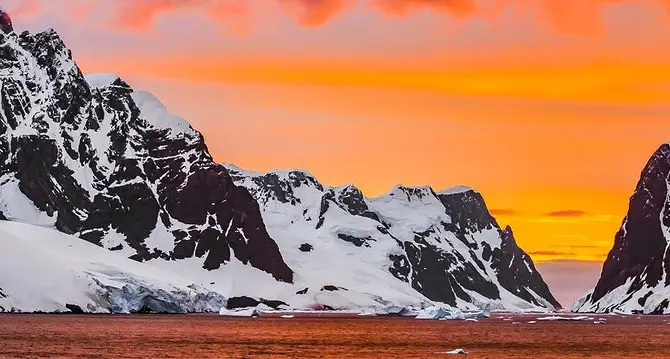
King George Island
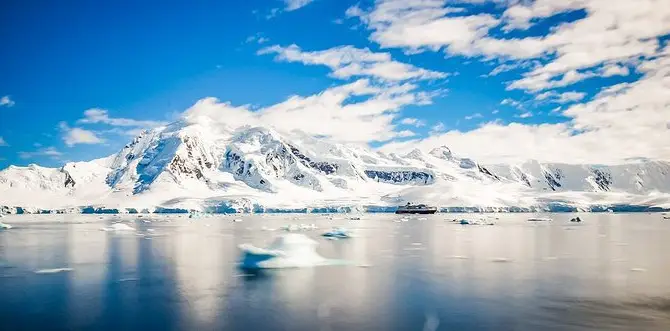
South Shetland Islands

Paulet Island
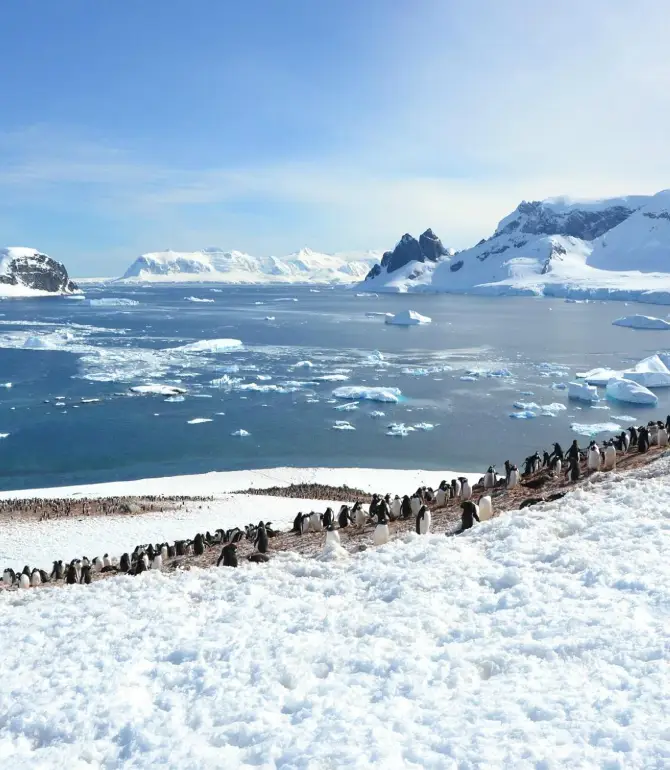
Deception Island
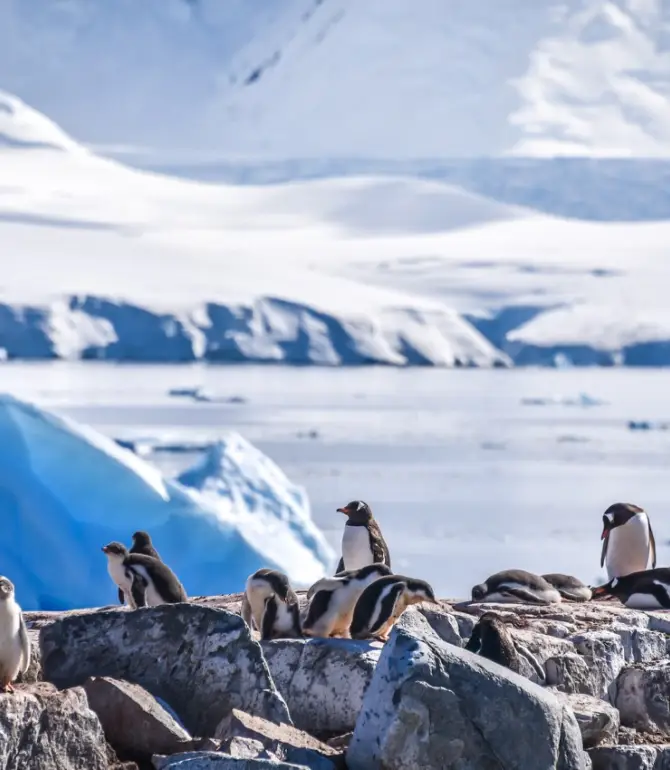
Petermann Island

Balleny Islands

Elephant Island
Things to do in Antarctica
What to Do
Great Wall Station
South Shetland Islands
Half Moon Island
Cuverville Island
Paradise Bay
Goudier Island
Petermann Island
Neko Harbor
Cuverville Island Penguin Watching
Antarctica Moments: Through Travelers' Eyes

Antarctica Guide 🇦🇶 | Real Review of ATLAS World Voyager Expedition Cruise

14-Day Tour of Chile and More: All You Need to Know

5 Days of Landing Sites in Antarctica: Discovering the Meaning of the End of the World

The ultimate 17-day Friends trip to Argentina and more is here!

🇦🇶 Day 5-8: FINALLY REACHED ANTARCTICA

How to make the most of a multi-country trip to Brazil and beyond?

Explore Antarctica and Four South American Countries in Just One Month for Under 100,000. 🚢✨ Exploration Journey: 32-Day South America and Antarctica Cruise Adventure 🚢✨

The South Pole expedition & 7th continent exploration
Best of Antarctica
Site Operator: Trip.com Travel Singapore Pte. Ltd.
